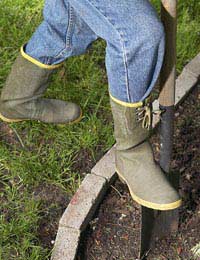
Although many of your organic vegetables can happily stay in the ground throughout winter, they’ll be susceptible to damage from slugs and weather. Heeling-in is a useful technique for storing your vegetables, mimicking their growing conditions to keep them healthy, happy and wholesome right through to spring.
The Benefits of Heeling-in
Heeling-in is a traditional technique of storing vegetables with many benefits. It frees up space in the vegetable garden, because you lift the vegetables out and pack them closely in a new trench. (You can use this space to sow some over-wintering broad beans, or dig it and incorporate manure ready for spring.) The vegetables stay in better health, because you’ve replicated their growing conditions quite closely. It’s more eco-friendly too: the alternative would be to store many of these winter vegetables in the fridge.
How to Heel-in
For advice on heeling-in your vegetables, we turn to vegetable-plot goddess Joyce Larkcom, whose authoritative book illustrates the process: ‘Make a shallow V-shaped trench or hole, lay the plants in it close together, cover the roots and part of the stem with soil, and water them. Heeled-in plants will keep in reasonable condition for several weeks.’ When you’re heeling-in, pick a sheltered spot, and dig the soil thoroughly before you start. Covering with straw will prevent the soil from freezing hard, which doesn’t make harvesting difficult.
Heeling-in Leeks
Jamie Oliver recently re-introduced us to this old-fashioned technique. He showed how to heel-in leeks for the winter. It’s particularly beneficial if there’s a threat of frost or flood, both of which make leeks difficult to lift or store. Slice the dry tops off the leeks and put them into a trench of freshly-weeded soil (choose a sheltered spot). Loosely replace the soil and heel-in with your foot to give the leeks a firm hold. They stop growing and will keep very well – some say for up to three months. Just lift them as required.
Heeling-in Parsnips
The parsnip is one of those rare vegetables that enjoys a bit of frost in the winter. In fact you won’t be enjoying the best taste if you lift your organic parsnips before October. You can leave them in the ground, but if you need the space, heel them in. Do this as described above – adding some straw or bracken to prevent their new location from freezing solid, which makes the roots difficult to lift.
Heeling-in Celeriac
Tough old Celeriac will also tolerate winter weather, but it may be easier to harvest and access if you heel it in close to your back door or allotment gate. When the roots are ready (from October/November), lift and heel them into a shallow trench, then cover with straw. The Celeriac will stay in good health for a good few weeks.
What Should You Put In The Space?
One of the main reasons to heel-in is to free up the space for other vegetables. To maximise your produce, dig and re-sow the beds. It may be winter, but you can plant garlic cloves, overwintering broad beans or peas, and green manures such as Winter Rye.
